How to repot a jade plant? Jade plants are fleshy, succulent plants with thick, Oval-shaped leaves and stiff stalks. It’s also called the ‘money plant’ or the ‘good luck plant.’
It may be cultivated inside and outdoors. It is a slow-growing plant with a growth rate of 2 to 3 inches a year.
The Jade plant or Crassula ovata (botanical name) has luscious and juicy green leaves and is part of a genus with 300 distinctive plants belonging to the Crassulaceae family according to the University of Wisconsin.
Jade plants require proper care for their growth and can grow up to 3 to 6 feet tall if kept properly. They should be repotted on time and in appropriate containers to ensure maximum growth.
Table of Contents
How to Repot a Jade Plant?
To repot a jade plant use a container with proper drainage and a well-drained soil mix to ensure adequate growth. The plant should be taken out carefully and placed gently and upright in the new container. Constant watering and early use of fertilizer should be avoided for a newly repotted jade plant.
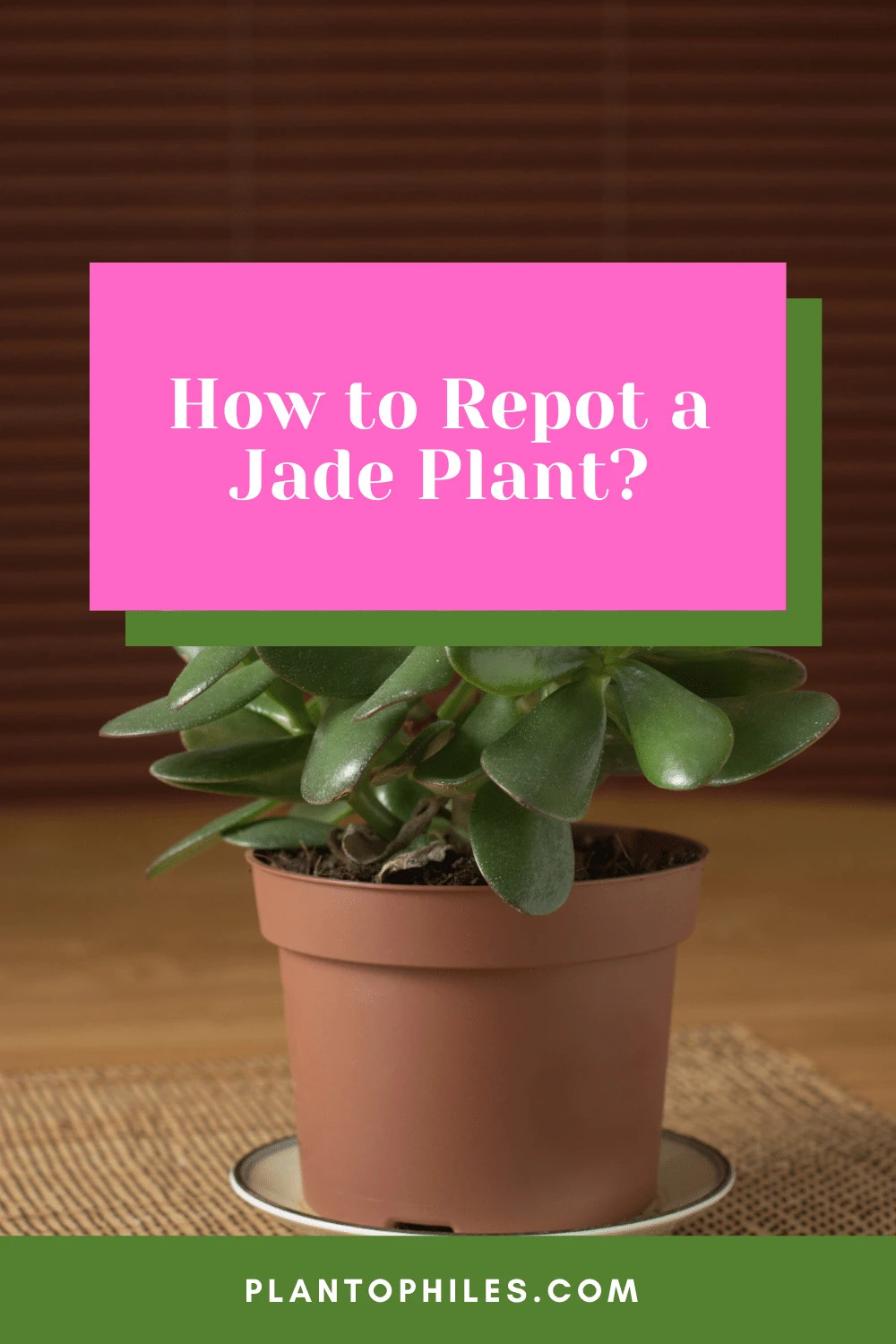
How to Repot a Jade Plant?
Repotting Jade Plants
When to Repot
It does not require frequent repotting because to its moderate growth. Small plants should be repotted every 2 to 3 years, and bigger plants can be repotted after 4 to 5 years.
The best time is usually before winter, either in spring or summer, which is considered the growing season.
If you see your Jade plant outgrowing its container or overcrowding, it is time to repot it.
Size of Pot
For a moderately-sized Jade plant, a 4 to 6 inches container works best.
Since Jade plants have a slow growth rate, it is ideal to move up an inch every time you repot.
E.g., if the plant was placed in a 5-inch pot previously, the next pot should be 6 inches.
Jade Plants like crowded spaces, so the pot should not be too big. Small pots also help in the easy management of an indoor plant.
Unless you want the plant to grow into a bigger plant or tree, small pots are ideal for a Jade Plant.
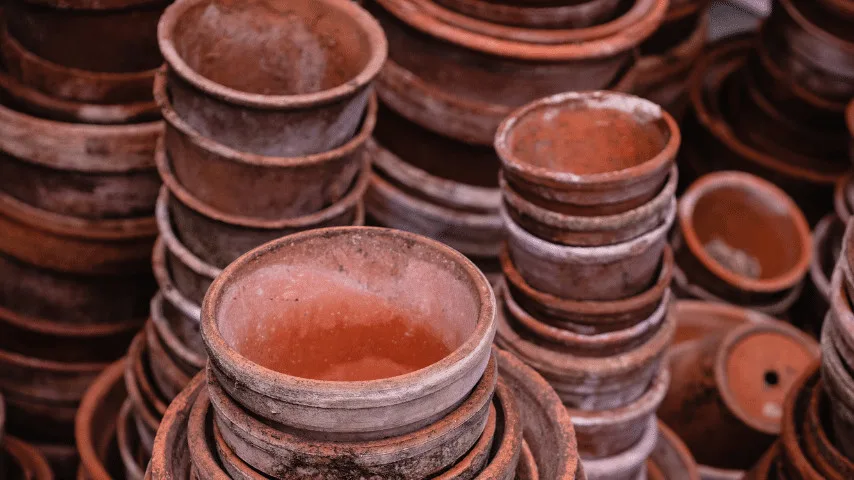
Size of Pot for Jade Plant
Type of Container
The container should ensure proper soil drainage because the plant cannot tolerate waterlogging. It leads to root rot.
If you opt for a plastic container, make sure that it has an excellent drainage mechanism through drainage holes.
Other options can be ceramic pots or containers made from terracotta or clay that can absorb extra moisture from the soil and prevent waterlogging.
Glazed terracotta pots are preferred because bare terracotta can absorb too much moisture, which can damage the plant.
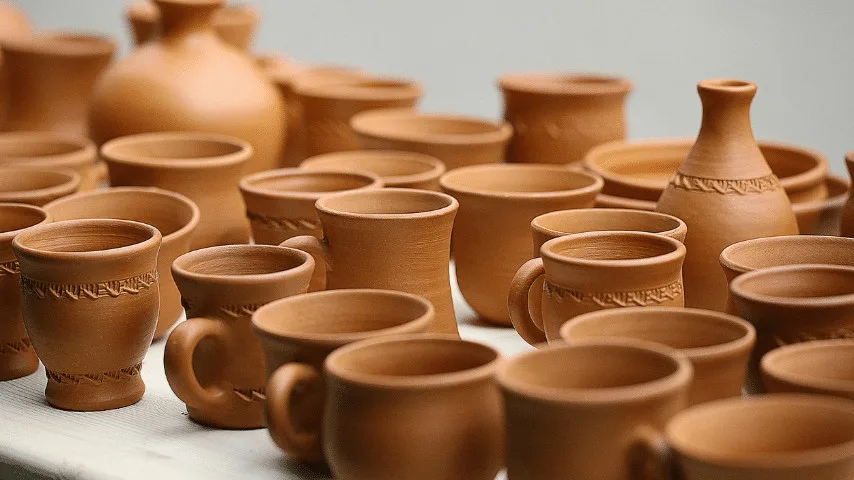
Type of Container for Jade Plant
Type of Soil
A mix of aerated and well-drained soil is used to repot a Jade plant. Plant roots required breathing to survive; hence aerated soil is preferred.
Sterilized soil and peat moss in equal parts along with three parts of coarse sand is considered best for repotting Jade plants.
Alternates for these are Coconut Coir or compost instead of soil or Peat Moss. 2 tablespoons of limewater should be added to the potting mix and mixed well.
Cacti and Orchid mix, along with coarse sand perlite, are also good for jade plants.
These potting mixes ensure that the roots of the plant are stable in a heavy soil mixture, and the top, despite being heavy, will not cause the plant to fall over.
The soil mixture must have organic content like loam or bark in it because the roots require water around their tips.
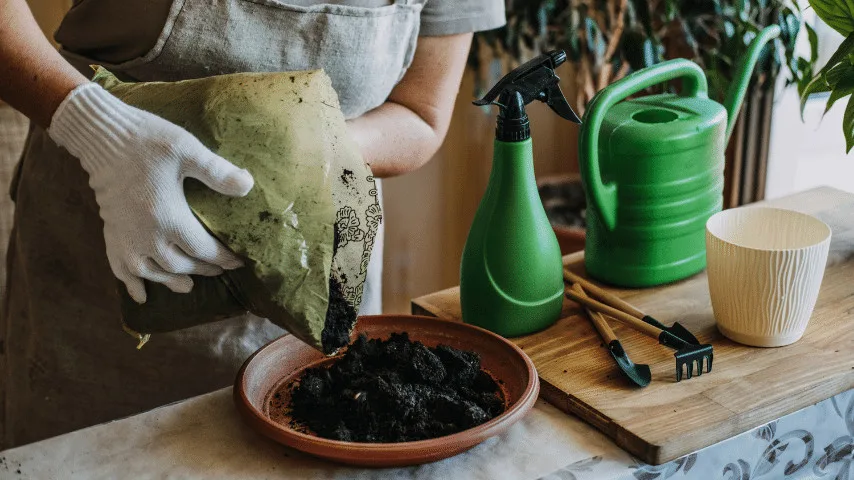
Type of Soil mix of aerated and well-drained soil is used to repot a Jade plant
Pruning
It should be kept in mind that before placing the jade plant into the new container, cut down any rotten or damaged roots from the bottom.
If there are cracks, use a fungicide to prevent damage. Pruning is also recommended before repotting a jade plant because it takes time for the roots to settle.
A very heavy top can lead the plant to topple over. The fallen off or cut off leaves can then be planted separately into the soil, and they will grow into new plants.
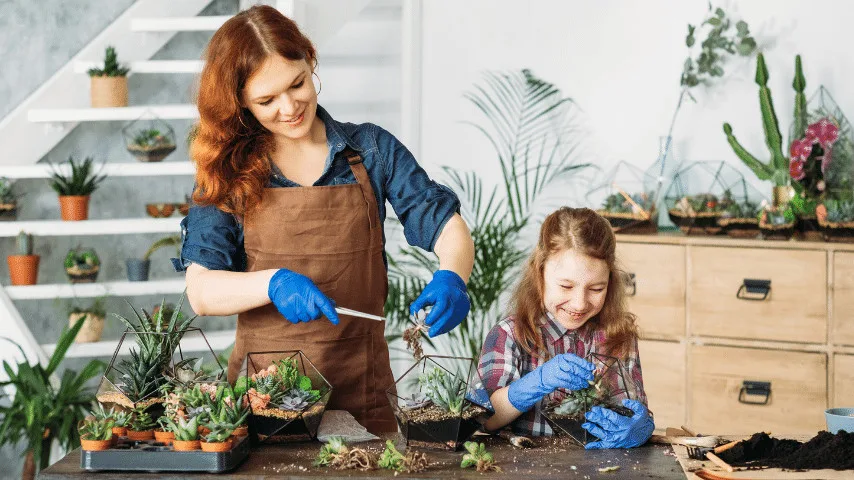
The pruning cut down any rotten or damaged roots from the bottom of the Jade Plant
Steps for Repotting
The steps below should be followed while repotting a jade plant.
- Take a blunt knife and gently separate the soil from the edge of the container in which the jade plant was previously placed.
- It helps separate the roots that connected to the pot’s side.
- Gently pull out the jade plant from the container by slightly twisting it to loosen the roots.
- Shrug off the excess soil from the roots of the jade plant.
- Place the soil mix at the 1 inch from the container’s base.
- Put the plant inside the pot and try to distribute the roots across the container’s bottom.
- Fill the rest of the container with potting mix while holding the plant upright.
- Make sure that the soil is completely settled by pressing it down.

Steps for Repotting Jade Plant
Plant Care After Repotting
After repotting the plant, do not water it for at least 2 weeks because fresh soil has enough moisture for the succulent plant to restore. Adding extra water can lead to waterlogging.
If you lose any leaves during the potting process, you can always plant them directly in the soil, and they will grow into new plants.
Do not fertilizer your newly repotted plant for at least a month. This can lead to burned roots. The ideal time to wait before fertilizing is 4 months.
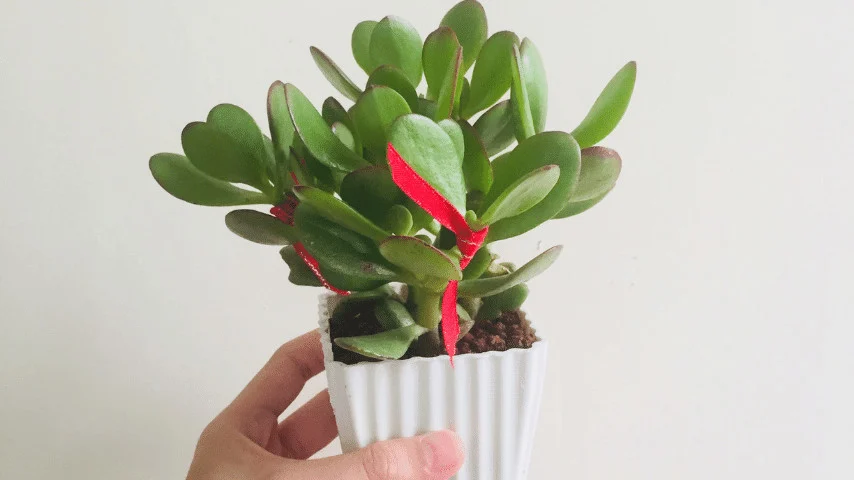
Plant Care After Repotting Jade Plant
Frequently Asked Questions About How to Repot a Jade Plant
Do Jade Plants like big pots?
Jade plants prefer smaller pots because they like crowding at the roots. On all edges, the pot should be half an inch larger than the plant.
Is it necessary to soak my Jade Plant before watering it?
Before repotting the jade plant, let the soil to dry out. If the roots are stuck, then you may soak the plant but do not water it after repotting.
Is misting a Jade Plant after repotting a good idea?
It is best to avoid misting a Jade Plant after repotting because the plant is sensitive to water, and over watering may lead to root rot.


